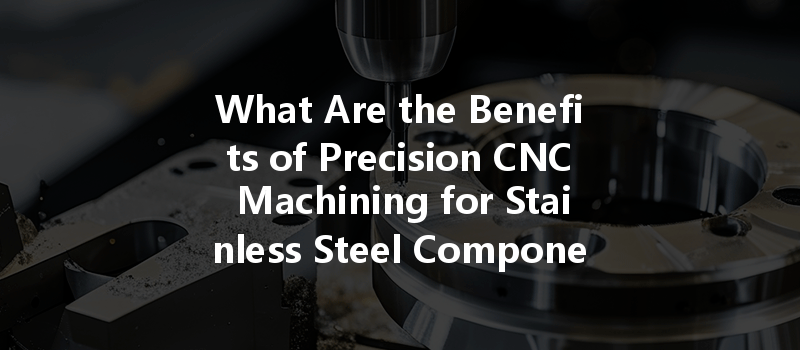*
Did you know that stainless steel accounts for nearly 60% of all steel used in the major engineering industries today? This remarkable statistic reflects the growing reliance on this versatile material across a multitude of sectors. Precision CNC (Computer Numerical Control) machining has emerged as a game-changer in the manufacturing world, especially when it comes to processing stainless steel components. But how exactly does precision CNC machining enhance the fabrication of stainless steel?
In this blog, we’ll explore the ins and outs of precision CNC machining for stainless steel, examining its benefits, applications, and how companies can leverage its technical prowess to solve common manufacturing challenges.
—
To appreciate the advantages of precision CNC machining, it’s essential to grasp what it entails. CNC machining refers to the automated control of machining tools like drills, lathes, and mills by a computer. This technology converts a digital file into physical components, allowing complex designs to be created with high precision, repeatability, and efficiency.
1.
—
Stainless steel is distinguished by its high corrosion resistance and strength, which can be attributed to its composition. Generally, it contains a minimum of 10.5% chromium, which forms a passive oxide layer on the steel that protects it from rust and corrosion.
2.
Understanding the different alloys is essential because the choice of alloy affects the machining process:
—
Precision CNC machining offers a host of benefits that make it ideal for handling stainless steel components:
3.
CNC machining allows for incredibly precise cuts and measurements. This accuracy is critical in industries like aerospace, automotive, and medical devices, where even minute deviations can have significant consequences.
3.
CNC machines operate continuously, producing parts at a rapid pace without sacrificing quality. This efficiency means that businesses can meet tight deadlines while maintaining high production volumes.
3.
Complex geometries that would be nearly impossible to achieve manually can be designed and produced with CNC machining. This is particularly advantageous for custom components that demand unique specifications.
3.
Precision CNC machining is versatile enough to handle various stainless steel grades and types, allowing manufacturers to choose the optimal material for their specific applications.
3.
CNC machining optimizes material usage by generating fewer scrap pieces compared to traditional machining methods. This reduction not only leads to cost savings but also supports sustainability in manufacturing.
—
The versatility of precision CNC machining translates into a wide array of applications across several industries:
4.
In aerospace, components such as fuel tanks, brackets, and fittings often require precision stainless steel machining to ensure structural integrity and reliability under extreme conditions.

4.
The medical field frequently utilizes stainless steel for surgical tools and implants, where precision and hygiene are paramount. CNC machining ensures that these components meet international regulatory standards.
4.
From engine components to body parts, CNC machining of stainless steel allows for lightweight, durable solutions that can withstand the demands of modern automobiles.
4.
Corrosion resistance is critical in marine environments. Stainless steel components machined with precision CNC technology provide long-lasting solutions in boat construction, fittings, and fixtures.
4.
The food industry requires materials that resist corrosion and are easy to clean. CNC-machined stainless steel is often used in equipment such as mixers, conveyors, and packaging machines.
—
Despite its numerous advantages, CNC machining of stainless steel can present challenges. Here are some common issues and their solutions:
5.
Stainless steel can be hard and abrasive, leading to faster tool wear. Using high-quality, coated tools can significantly extend tool life. Regular maintenance and replacing worn tools promptly can prevent issues.
5.
CNC machining generates considerable heat, which can lead to thermal distortion and impact the integrity of the component. Implementing effective cooling methods, such as flood cooling or using cutting fluids, can help mitigate this risk.
5.
Holding stainless steel parts securely is crucial for accurate machining. Advanced workholding solutions like pneumatic or hydraulic fixtures can offer enhanced stability, reducing the likelihood of parts shifting during machining.
5.
Due to the complexity of some stainless steel components, the programming of CNC machines can be challenging. Investing in skilled programmers who are proficient in CAD/CAM software can simplify this process and enhance overall productivity.
—
To make the most out of CNC machining when working with stainless steel, consider implementing the following best practices:
6.
Selecting the appropriate grade types based on the application is foundational. Assess factors like corrosion resistance, strength, and workability before making a decision.
6.
Fine-tuning speed, feed, and depth of cut ensures high-quality finishes and extends friction tool life. Use software simulations to determine the best parameters beforehand.
6.
Keeping staff updated with the latest machining techniques, software updates, and industry guidelines can lead to improved performance and production quality.
6.
Regular maintenance of CNC machines prevents downtimes and production delays. Implementing predictive maintenance strategies can help identify and fix problems before they disrupt operations.
—
Precision CNC machining of stainless steel is a cornerstone of modern manufacturing, offering unparalleled accuracy, efficiency, and versatility that are crucial in today’s competitive industries. By understanding the properties of stainless steel and harnessing the full potential of CNC technology, businesses can manufacture high-quality components that meet exacting standards.
In summary, transitioning to precision CNC machining for stainless steel components offers significant benefits, including reduced waste, lowered costs, and intricate design capabilities. As you consider the future of your manufacturing processes, embracing precision CNC machining will not only enhance your production efficiency but also reinforce your position in the market. By applying the techniques and best practices discussed in this blog, you’re well-equipped to navigate the complexities of stainless steel machining effectively.
This blog serves as a critical resource for understanding and optimizing CNC machining processes, confirming that the integration of precision technology is paramount for meeting the demands of today’s dynamic industrial landscape. As we advance into the future, let’s continue to explore the innovative potential of CNC machining for stainless steel and other materials, driving efficiency and excellence across all industries!






